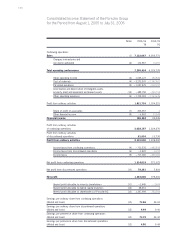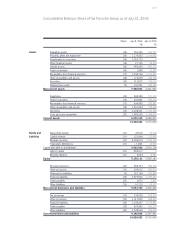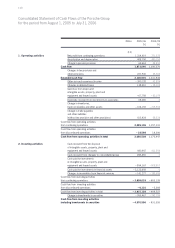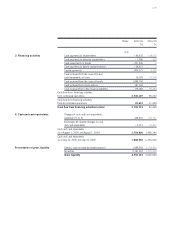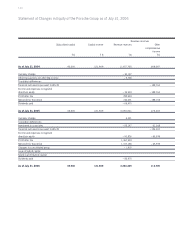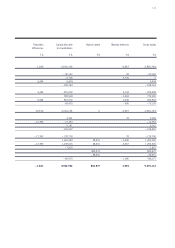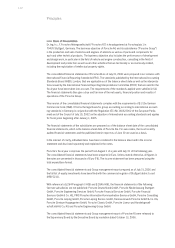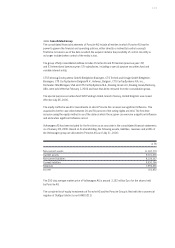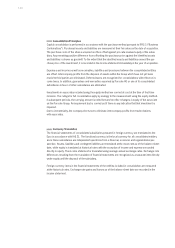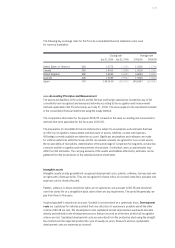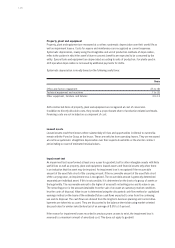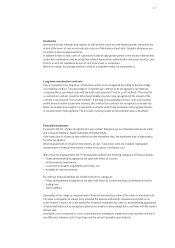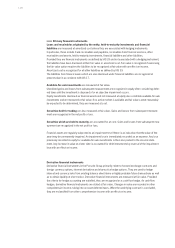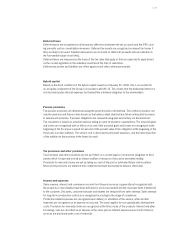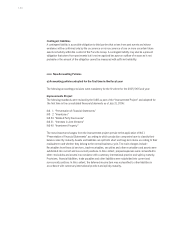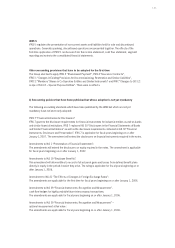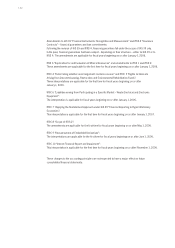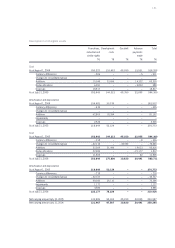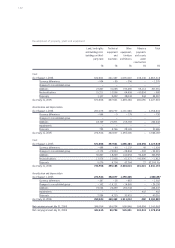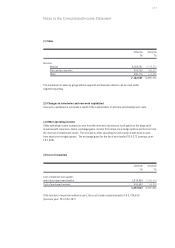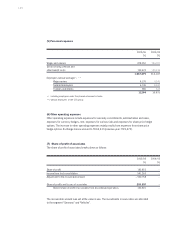Porsche 2005 Annual Report Download - page 118
Download and view the complete annual report
Please find page 118 of the 2005 Porsche annual report below. You can navigate through the pages in the report by either clicking on the pages listed below, or by using the keyword search tool below to find specific information within the annual report.
116
Self-constructed items of property, plant and equipment are recognized at cost of conversion.
In addition to directly allocable costs, they include a proportionate share of production-related overheads.
Financing costs are not included as a component of cost.
Leased assets
Leased assets result from leases where substantially all risks and opportunities incidental to ownership
remain with the Porsche Group as the lessor. These are vehicles from operating leases. They are measured
at cost less systematic straight-line depreciation over their expected useful life or the shorter contract
period taking account of estimated residual values.
Impairment test
An impairment test is performed at least once a year for goodwill, but for other intangible assets with finite
useful lives as well as property, plant and equipment, leased assets and financial assets only when there
is an indication that the asset may be impaired. An impairment loss is recognized if the recoverable
amount of the asset falls short of the carrying amount. If the recoverable amount of the asset falls short
of the carrying value, an impairment loss is recognized. The recoverable amount is generally determined
separately per individual asset. If this is not possible, it is determined on the basis of a group of assets or
the legal entity. The recoverable amount is the higher of an asset’s net selling price and its value in use.
The net selling price is the amount obtainable from the sale of an asset at customary market conditions
less the costs of disposal. Value in use is determined using the discounted cash flow method or capitalized
earnings method on the basis of the estimated future cash flows expected to arise from the continuing
use and its disposal. The cash flows are derived from the long-term business planning and current deve-
lopments are taken into account. They are discounted to the balance sheet date using market-oriented
discount rates for similar risks (before tax) of an average of 8.85 to 10 percent.
If the reason for impairment losses recorded in previous years ceases to exist, the impairment loss is
reversed to a maximum amount of amortized cost. This does not apply to goodwill.
Years
Office and factory equipment 25 to 40
Technical equipment and machines 7 to 20
Other equipment, furniture and fixtures 3 to 13
Property, plant and equipment
Property, plant and equipment are measured at cost less systematic depreciation over their useful life as
well as impairment losses. Costs for repairs and maintenance are recognized as current expenses.
Systematic depreciation, mainly using the straight-line and unit of production methods of depreciation,
reflects the pattern in which the asset’s future economic benefits are expected to be consumed by the
entity. Special tools and equipment are depreciated according to units of production. For plants used in
shift operation depreciation is increased by additional payments for shifts.
Systematic depreciation is mostly based on the following useful lives:


